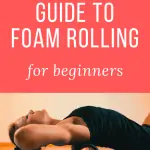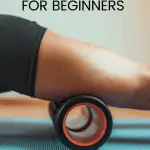This page contains affiliate links for your convenience. If you click through a link and make a purchase, I may receive a commission at no additional cost to you. As an Amazon Associate, I earn from qualifying purchases. Read the full disclosure here.
On this page, you can find a variety of foam roller exercises with pictures to tackle muscle tension, soreness, and improve mobility for each major muscle group.
Be sure to check out Foam Rolling 101 – Is It Worth The Hype? to learn more about the science of foam rolling and the best ways to add it to your fitness routine.
How To Choose A Foam Roller Made Easy will help you decide which foam roller is right for you!
Disclaimer: This content is for educational purposes and is not medical advice. Read the full disclaimer.
If you’re in a hurry, check out some of these high-quality options to add to your collection.
SAFETY TIPS FOR FOAM ROLLING
Foam roller exercises sound like they should be fail-proof easy. For the most part, it is, but here are some essential safety tips for how to use a foam roller properly!
- Foam rolling may be uncomfortable at times, but should never be excruciating.
- More aggressive isn’t better.
- Work slowly over trigger points to allow tissues to relax.
- Don’t hold your breath.
- Don’t apply direct pressure over joints or bony prominences such as the lumbar spine or lateral hip.
- Use your arms and legs to support you and adjust how much pressure you’re applying.
- If you have any medical conditions, check with your PT to make sure it’s safe for you to be rolling.
- When foam rolling the legs, apply pressure when moving toward the heart to aid in circulation and avoid damaging veins.
SHOULDER MOBILITY
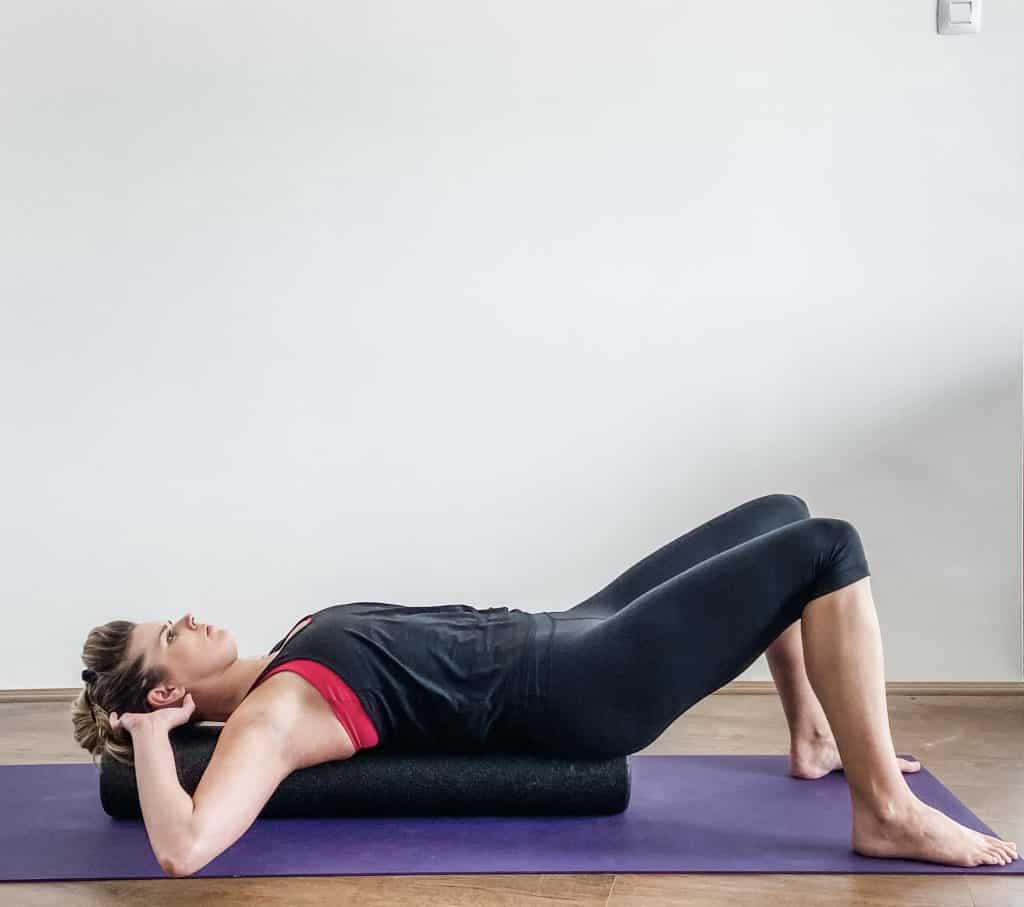
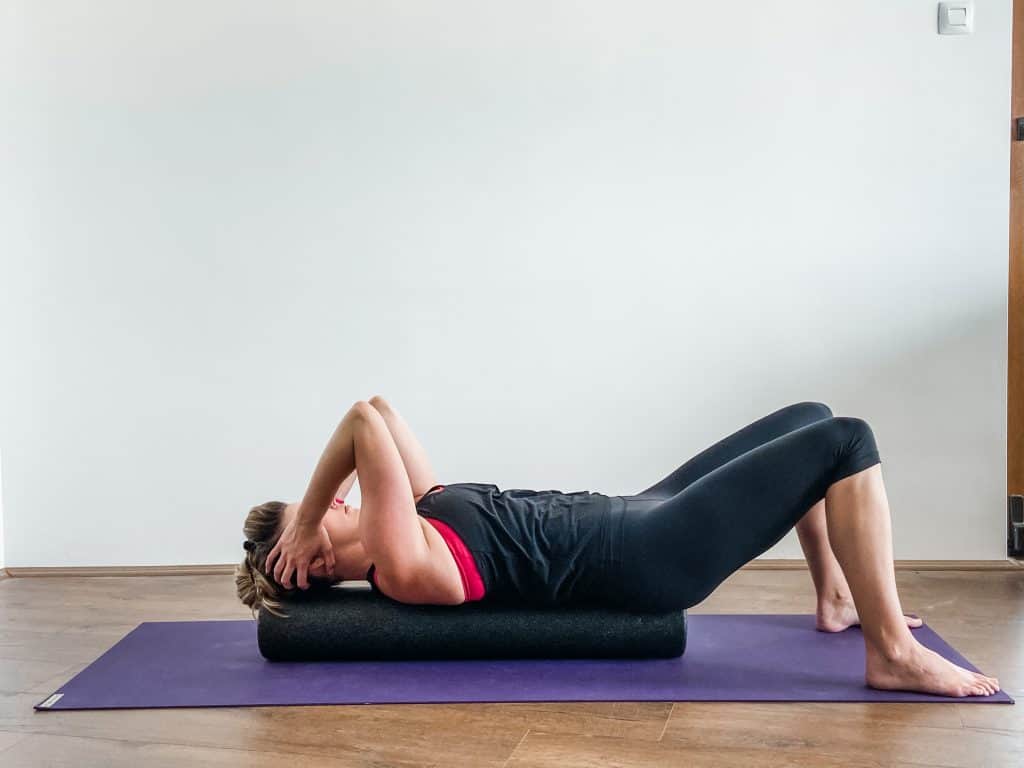
HOW TO PERFORM
- Lie on the foam roller so that it’s along your spine, with both your head and sacrum supported.
- Clasp your hands behind your head, rest the head in the hands, do not strain to keep your head up.
- Bring the elbows toward each other as far as is comfortable for you.
- Slowly allow the elbows to fall toward the ground and allow gravity to sink the shoulders down.
- Repeat 20-30 repetitions.
PEC STRETCH
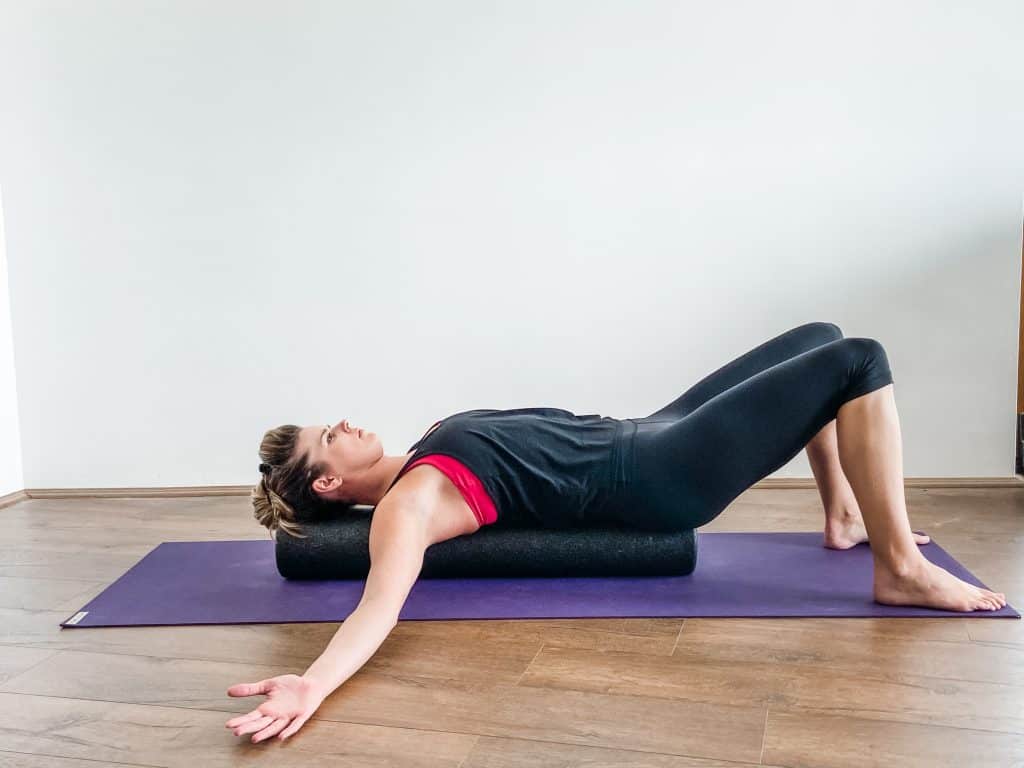
HOW TO PERFORM
- Lie on the foam roller so that it’s along your spine, with both your head and sacrum supported.
- Slowly extend your arms out to a T position and stay for 30 seconds.
- Variations include putting the arm at a goal post position or a Y. Some positions may be more intense than others.
- This option may be too intense for some because the foam roller lifts you and gives extra space. If there is pain or tingling, you can always try without the roller and work up to it as your flexibility and mobility improve.
LATS
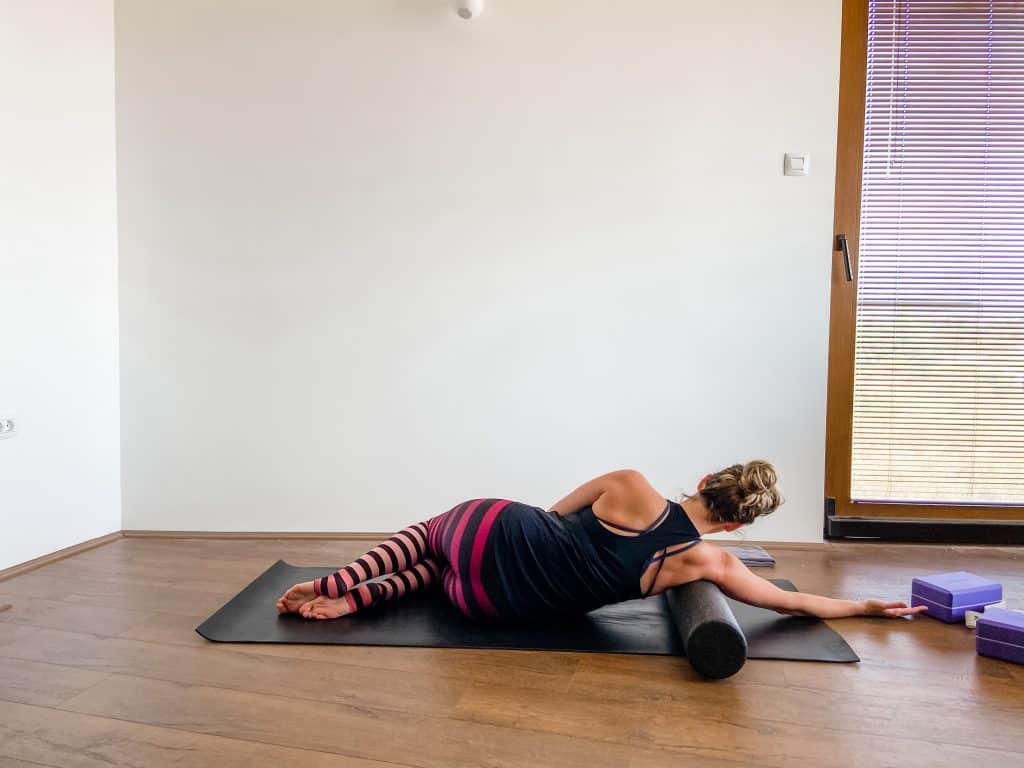
HOW TO PERFORM
- Lie on your side with your arm extended overhead and the palm facing up.
- Place the foam roller under your arm, toward the back of your armpit.
- Gently roll along the outside border of the shoulder blade – don’t roll further onto the ribs.
- Perform for 2-3 minutes.
THORACIC SPINE MOBILITY – EXTENSION
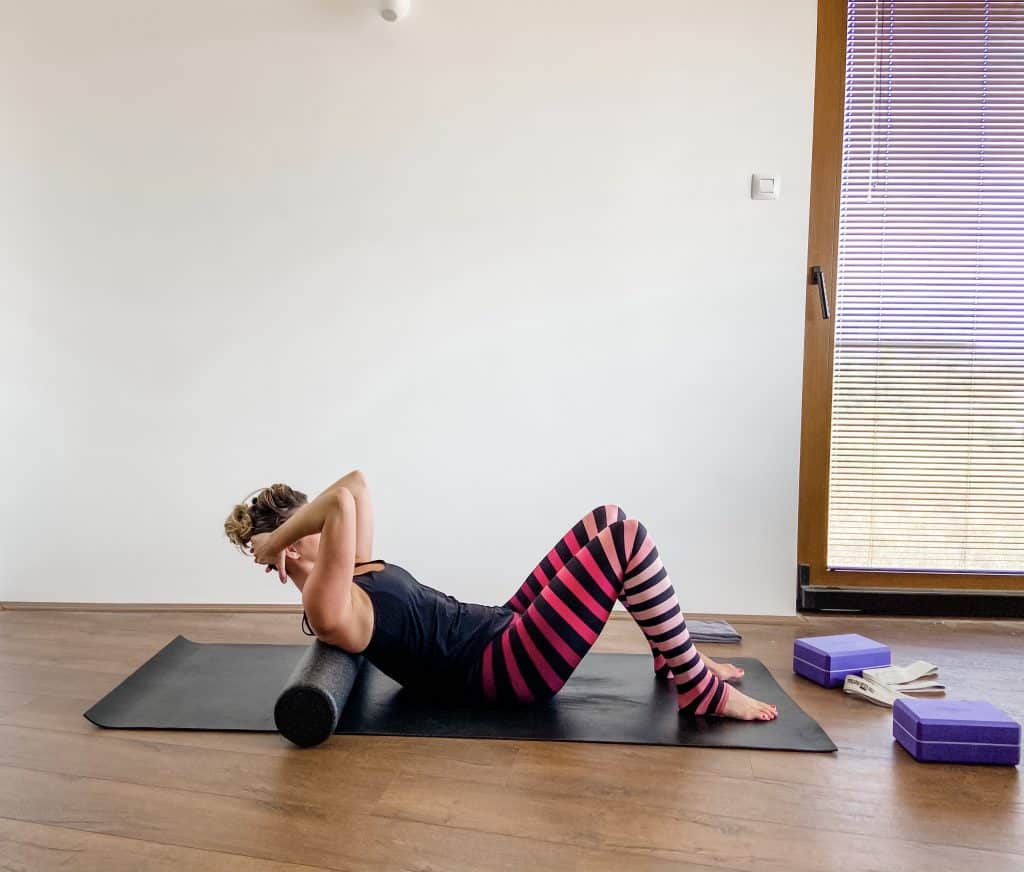
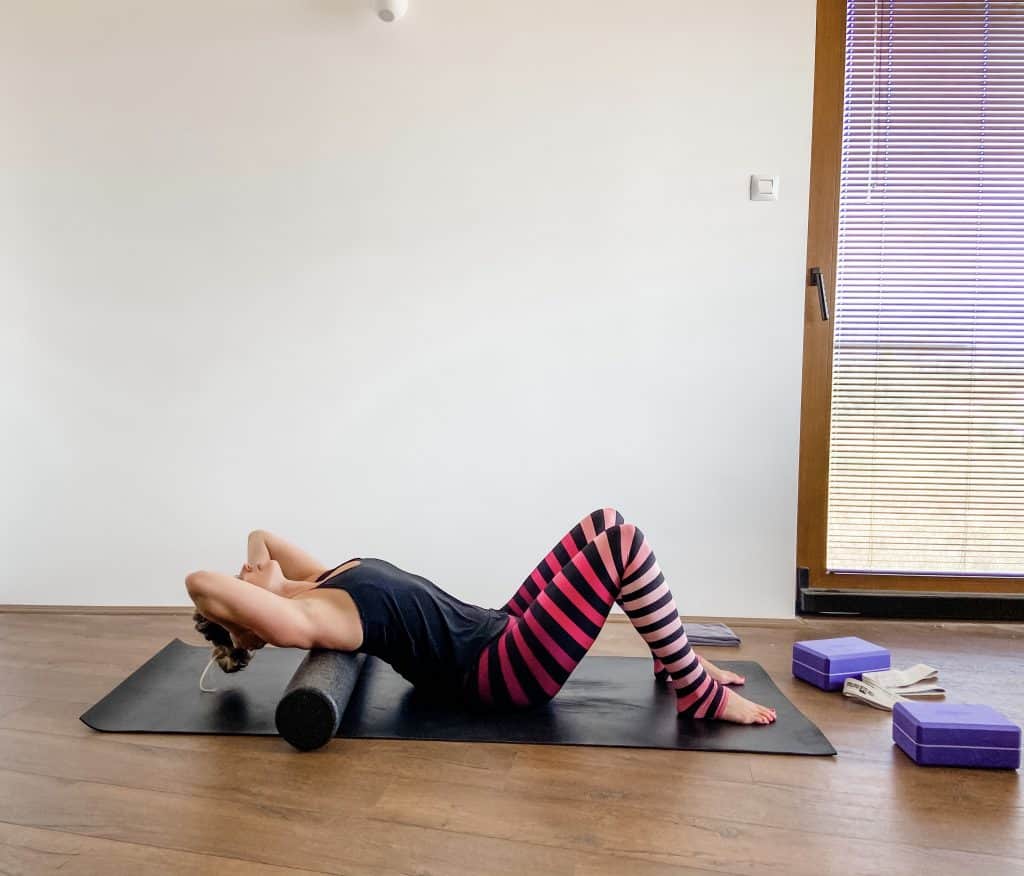
HOW TO PERFORM
- Sit on the floor and place the foam roller perpendicular to your spine at the shoulder blades level.
- Cradle your head and neck with your hands. You’ll want to keep your neck in neutral while performing this stretch.
- Gently roll back, extending over the foam roller only as far as you feel comfortable.
- Slowly lift back up and repeat ten times.
- Keep your bottom on the floor the whole time, and keep your gaze on the top of your knees to protect your neck alignment.
QUADRICEPS
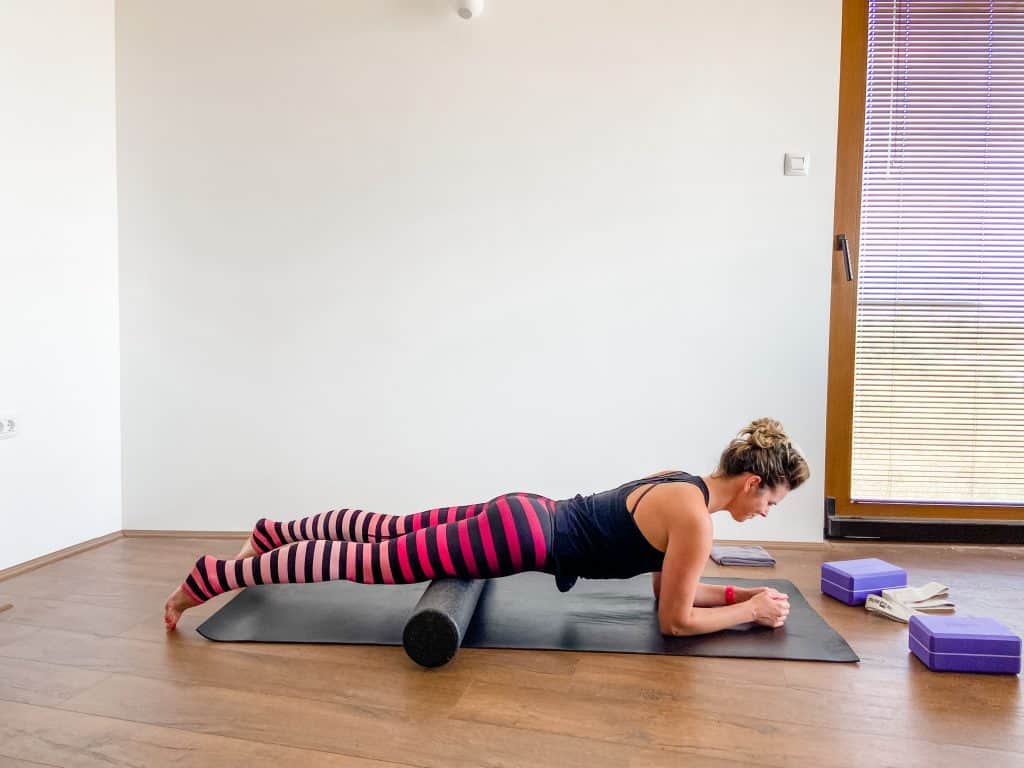
HOW TO PERFORM
- Lying on your stomach, place the foam roller under your thighs, and support yourself on your elbows, as is you were in a plank.
- Gently roll back and forth along the length of the quad muscles.
- Perform for up to 3 minutes.
- Follow up with stretching to maximal results.
HAMSTRINGS
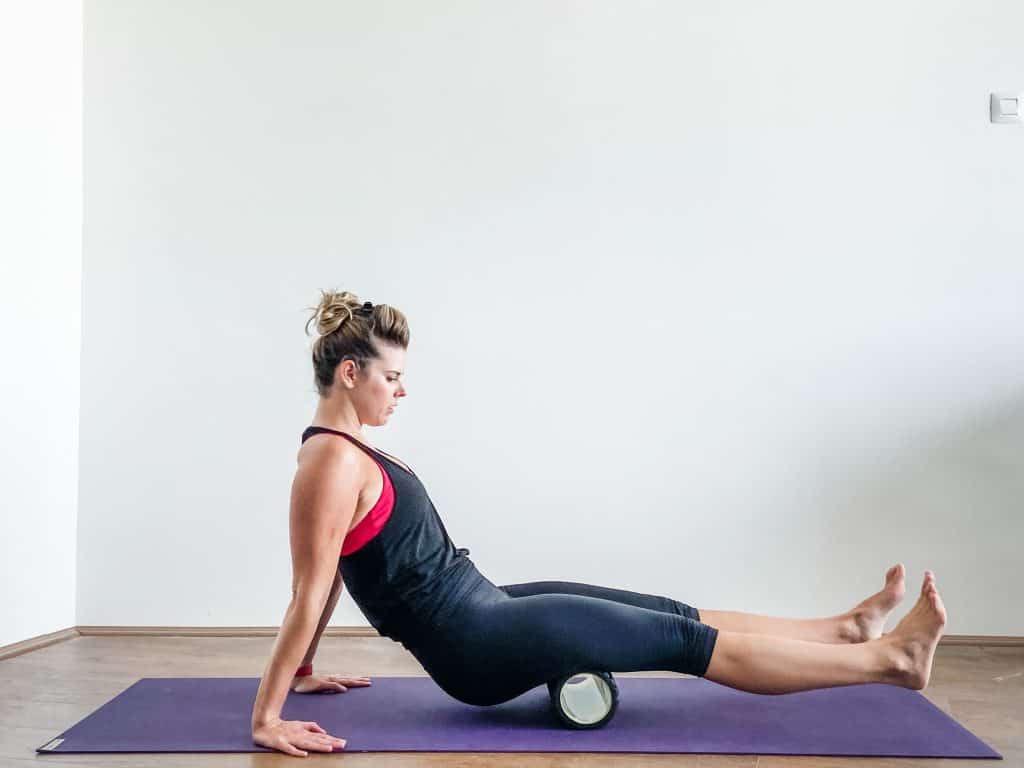
HOW TO PERFORM
- Place the foam roller under the hamstrings (back of the thighs).
- Place your hands next to your hips and gently support your weight through your hands.
- Lift your bottom and slowly roll over the length of the hamstrings (from just above the knees to the sit bones)
- Perform for 30 seconds to 2 min
GLUTES & PIRIFORMIS
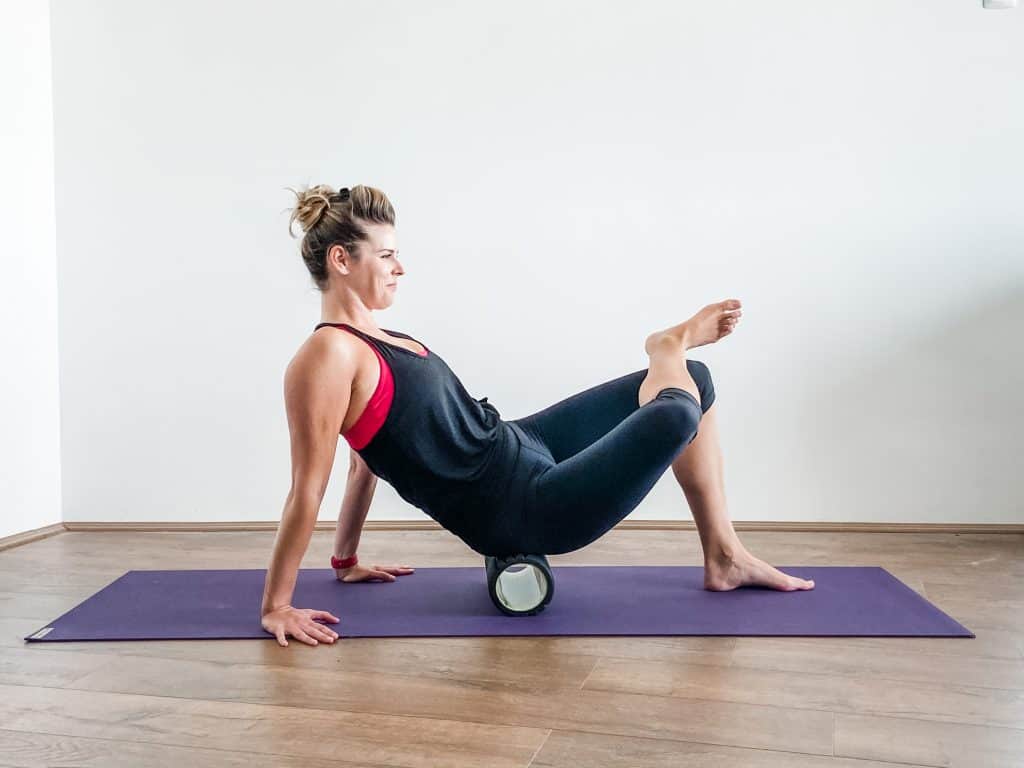
HOW TO PERFORM
- Sit on the foam roller and support yourself with your hands on the floor behind you. Your feet will also be flat on the floor as if you were in a “crab walk” position.
- One side at a time, shift over onto one glut and slowly roll back and forth.
- Crossing that ankle to the opposite knee in a figure 4 position will intensify the stretch.
ADDUCTORS

HOW TO PERFORM
- Lie on your stomach in a sphinx position
- Place the foam roller parallel to you and bring one leg up on to the roller.
- Slowly roll from just above the knee, all the way up to the pelvis.
- Perform for 2-3 minutes.
TENSOR FASCIA LATAE (TFL)

You might notice I didn’t include foam rolling for the IT Band. That’s because the IT Band is made of dense connective tissue and doesn’t stretch or respond to foam rolling in the same way a muscle does and to be honest, it just isn’t very effective.
Smashing an already irritated area with a roller just makes tissues more cranky.
It might feel good in the short term, but to tackle IT Band pain, you need to be looking at the muscles that attach to it, mainly the TFL and glutes.
Foam rolling these areas along with strengthening produces better results.
HOW TO PERFORM
- Locate the “hip bones” on the front of the pelvis. The TFL is located around a 45-degree angle from the pelvis.
- Lie face down and place the foam roller where the hips meet the pelvis and roll halfway to your side.
- The TFL is a small muscle, only about 3 inches long; however, trigger points can be intense.
- Perform for 30 seconds to 2 minutes.
ACCESSORIES
Striped leggings by K-Deer
Yoga mats by Jade Yoga & Lululemon (sponsored)

